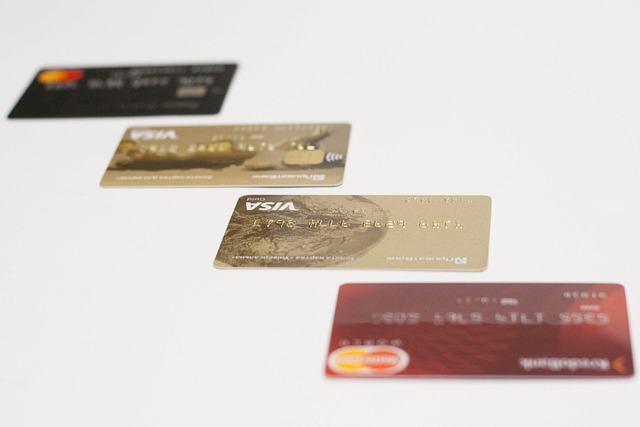Understanding Credit Cards: A Comprehensive Guide
Credit cards have become an integral part of modern financial life, offering convenience, security, and potential rewards. Whether you're looking to build credit, earn cash back, or simply manage your expenses more effectively, understanding the various types of credit cards and their features is essential. This guide will explore the world of credit cards, from the basics to more advanced topics, helping you make informed decisions about which card might be right for you.

What are credit cards and how do they work?
Credit cards are financial tools that allow you to borrow money from a bank or financial institution to make purchases. When you use a credit card, you’re essentially taking out a short-term loan that you’re expected to repay within a specified period, usually monthly. If you pay your balance in full each month, you typically won’t be charged interest. However, if you carry a balance, you’ll be charged interest on the unpaid amount.
Credit cards offer several advantages over cash or debit cards, including:
-
Convenience: You can make purchases without carrying cash.
-
Security: Many credit cards offer fraud protection and the ability to dispute charges.
-
Building credit: Responsible use of credit cards can help improve your credit score.
-
Rewards: Many cards offer cash back, points, or miles for your purchases.
What are the best credit cards available?
The “best” credit card varies depending on your financial situation, spending habits, and goals. However, some cards consistently rank highly across various categories:
-
Cash back cards: These offer a percentage of your purchases back as cash rewards.
-
Travel rewards cards: Ideal for frequent travelers, offering miles or points for travel-related expenses.
-
Balance transfer cards: These cards offer low or 0% introductory APR periods for transferring high-interest debt.
-
Low-interest cards: For those who occasionally carry a balance, these cards offer lower ongoing interest rates.
When choosing a card, consider factors such as annual fees, interest rates, rewards programs, and any additional perks or benefits offered.
How do cash back credit cards work?
Cash back credit cards are popular among consumers for their straightforward rewards structure. These cards typically offer a percentage of your purchases back as cash rewards. The cash back can be redeemed in various ways, such as statement credits, direct deposits to your bank account, or gift cards.
There are three main types of cash back structures:
-
Flat-rate: A fixed percentage on all purchases (e.g., 1.5% or 2% on everything).
-
Tiered: Different percentages for different spending categories (e.g., 3% on dining, 2% on groceries, 1% on everything else).
-
Rotating categories: Higher cash back rates on categories that change quarterly (e.g., 5% on gas stations this quarter, then 5% on restaurants next quarter).
When choosing a cash back card, consider your spending habits and which structure would benefit you most.
What options exist for credit cards for bad credit?
If you have a low credit score or limited credit history, there are still credit card options available to help you build or rebuild your credit:
-
Secured credit cards: These require a security deposit that typically becomes your credit limit.
-
Student credit cards: Designed for college students with limited credit history.
-
Store credit cards: Often easier to qualify for but may have high interest rates.
-
Credit-builder cards: Specifically designed for those with poor credit, often with lower credit limits and higher fees.
When using these cards, it’s crucial to make payments on time and keep your credit utilization low to improve your credit score over time.
How do secured credit cards help build credit?
Secured credit cards are an excellent tool for those with bad credit or no credit history. Here’s how they work:
-
You provide a security deposit, usually $200 to $2,000, which typically becomes your credit limit.
-
You use the card like a regular credit card, making purchases and payments.
-
The issuer reports your payment history to the major credit bureaus, helping you build a positive credit history.
-
After demonstrating responsible use, you may qualify for an unsecured card and get your deposit back.
Secured cards often have lower fees and interest rates compared to unsecured cards for bad credit. They provide a low-risk way for issuers to extend credit while giving you the opportunity to prove your creditworthiness.
| Card Type | Provider | Key Features | Cost Estimation |
|---|---|---|---|
| Cash Back | Citi Double Cash | 2% cash back on all purchases | $0 annual fee |
| Travel Rewards | Chase Sapphire Preferred | 2x points on travel and dining | $95 annual fee |
| Balance Transfer | Citi Diamond Preferred | 0% APR for 21 months on balance transfers | $0 annual fee |
| Secured | Discover it Secured | Cash back rewards, no annual fee | $200 minimum deposit |
| Credit-Builder | Capital One Platinum | No annual fee, considered for higher credit line in 6 months | $0 annual fee |
Prices, rates, or cost estimates mentioned in this article are based on the latest available information but may change over time. Independent research is advised before making financial decisions.
In conclusion, credit cards can be powerful financial tools when used responsibly. Whether you’re looking to earn rewards, build credit, or manage your finances more effectively, there’s likely a credit card that fits your needs. By understanding the different types of cards available and their features, you can make an informed decision that aligns with your financial goals and spending habits. Remember to always read the terms and conditions carefully and use credit responsibly to maximize the benefits while minimizing potential pitfalls.




